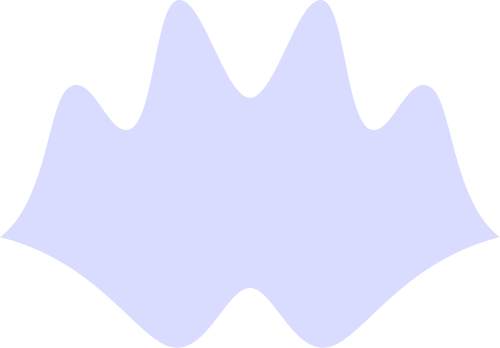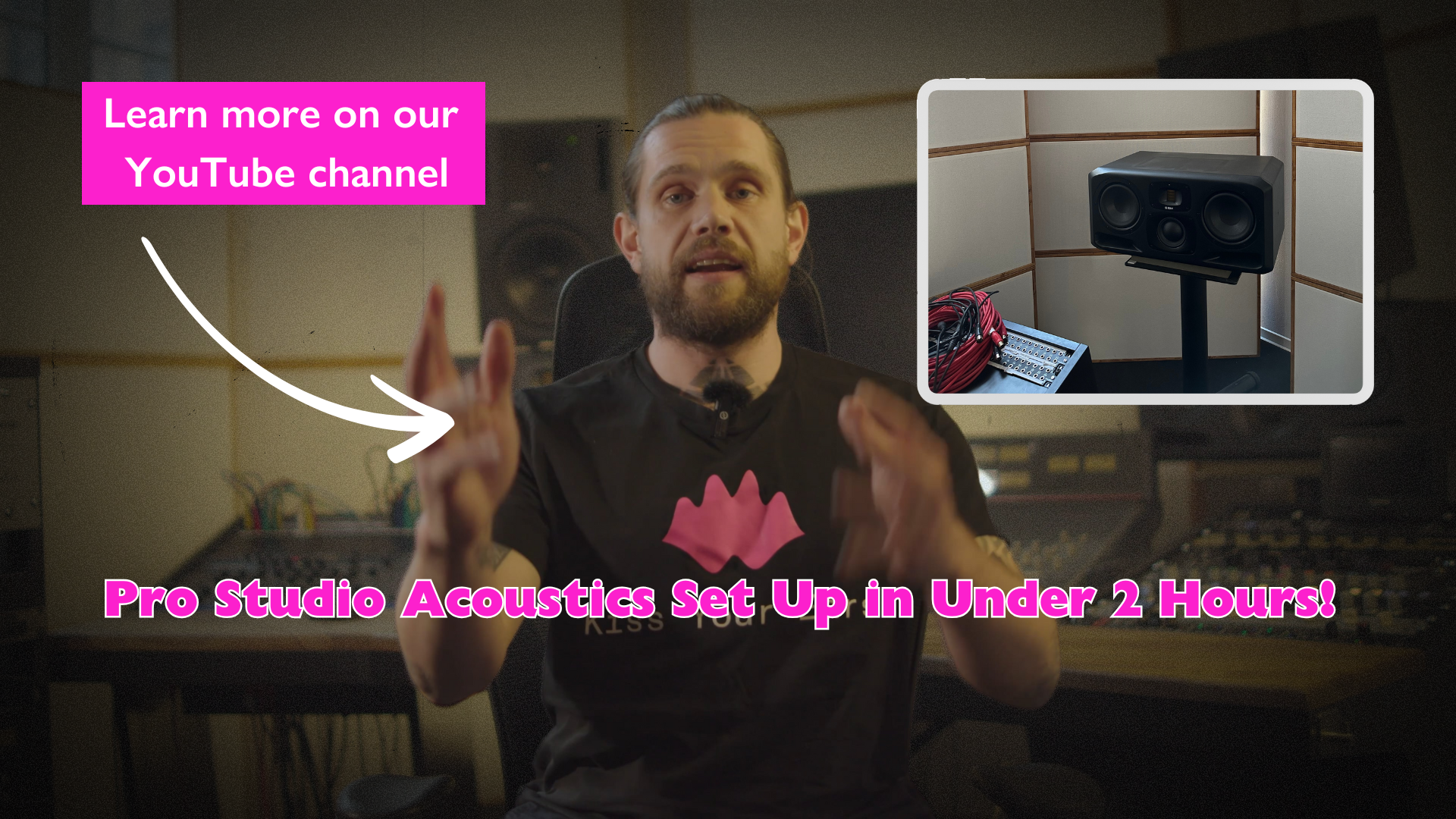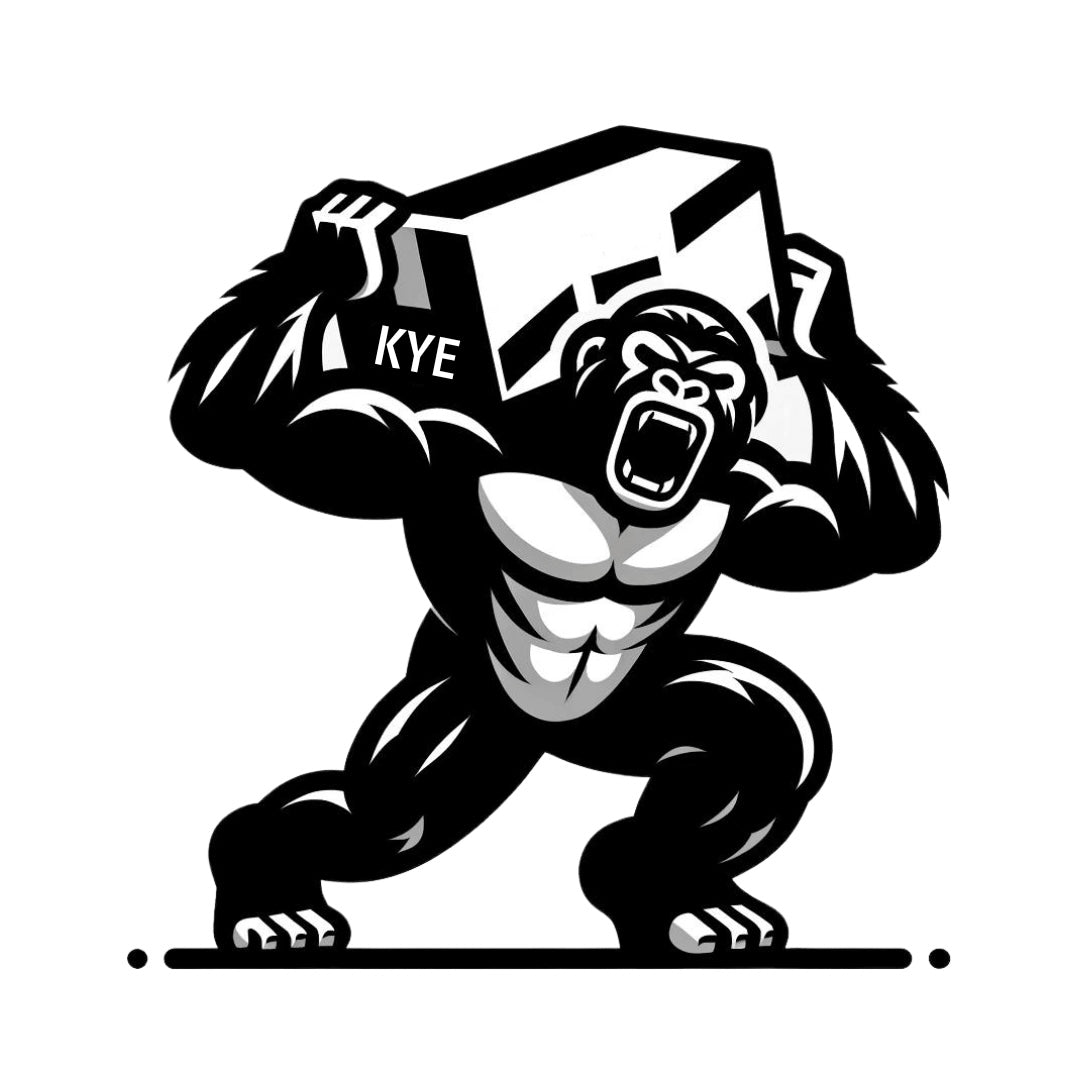How Many Bass Traps Do I Need?
A critical aspect of treating your space is properly understanding the acoustic terms and tools that can be used to redefine its characteristics. For example, larger rooms and spaces require a larger investment into acoustic treatment, why? Due to the fact that they exhibit larger equivalent absorption surfaces or areas that need to be treated. In layman's terms, that simply means a larger area of hard reflecting surfaces that need more treatment.
Redesigning a room to enhance its acoustics generally relies on several factors such as the absorption coefficients of the surfaces or walls of your space, together with its size or total surface area, as well as the geometry and modes of the room. Depending on the intended purpose of the room, the reverberation time and other anomalies may have to be corrected in order for your room to meet international standards for its proposed application (DIN or ITU).
Determining how many panels may be a suitable investment for your space may rely on the following:
- Size: Larger rooms will require more traps.
- Geometry: Rooms that are cuboid or square will typically require greater treatment.
- Acoustic Target: How tight or controlled you want your listening environment to be.
- Treatment Material: The absorption coefficients of the materials used to treat the space..
- Room Materials: The absorption coefficients of the surfaces of your room.
There are several methods of figuring this out. We will not only show you the theory behind doing so but we’ll also give you some handy shortcuts that simplify the process in this article.
What is absorption?
Absorption (of sound) is the process by which a material or structure transforms a part of the incident sound wave into heat energy, or transmits it throughout the absorbing body/ structure. While a part of the sound energy may be absorbed or transmitted, the rest of the energy from the initial incident sound wave is reflected back into the room. Different materials have different properties when it comes to determining how much of the energy from the initial wave can be either reflected, transmitted or absorbed. Absorption is frequency dependent too, meaning that each material will perform differently with regards to absorption, reflection and transmission at different frequency bands.
FYI: Absorption is also the most cost effective way to acoustically treat a room!
What is an absorption coefficient?
In order to determine the absorption properties of a particular material, tests are conducted in either a large reverberation chamber or an impedance tube to find its absorption coefficient. The absorption coefficient is a function of the frequency of the incident wave, and is defined as the ratio of energy that is absorbed by a material to the portion of incident energy at the material surface. The absorption coefficient will always be given as a decimal, 1.0 being perfectly absorbative, and 0 being totally reflective. Notice that for smoother and harder materials, the absorption coefficient decreases, meaning that the surface is more reflective.


For a more extensive list of materials you can visit: http://www.sengpielaudio.com/calculator-RT60Coeff.htm
Calculating the equivalent absorption area
A good place to begin with treatment is to calculate the reverberation time and equivalent absorption area from all of the surfaces within your room using the familiar Sabin equation for reverberation:

and

Where,

Please note that you will have to apply the formula for the frequency specific bands in each calculation in order to derive the full spectrum of your room’s reverb times (ie. 125hz, 250Hz etc.).
This may seem like a lot of math work to some, and luckily there are tools out there such as online calculators which simplify this process. One that we’ve found to be quite helpful for this purpose is the sengpiel reverberation calculator:
http://www.sengpielaudio.com/calculator-RT60.htm
Enter the data for your room’s surfaces into the data fields, and make a table for the reverb time in your frequency specific bands:

The next step is to make an average of the reverb time across these bands which you will use as your reference reverberation time. (This is just a rough estimation or numerical model! In order to properly determine your reverberation times you will need to perform acoustic measurements with a measurement microphone and acoustics software).
Calculating The Required Surface Treatment Area
Another online calculator that we use to determine how much treatment may be necessary for a room is the Amroc Room mode calculator. If you have calculated the reverb times of your frequencies and considered a new target that you want to reduce them to, you can input the target data into the RT60 field of the amroc room mode calculator and look at the table that outlines the equivalent absorption area needed to reach that target, as well as the average absorption coefficient of the materials of your panels. Alternatively, if you would like to treat your room to a particular international standard you can do so by selecting one from the dropdown menu. We recommend the International Telecommunications Standard ITU BS 1111.6-1 for audio production, as this is the most commonly recognised standard worldwide for control rooms and listening suites.
Note: Two different values are given, the first relies on the Sabin equation, the other is the Eyering - both are slightly different equations that are used to determine the equivalent absorption area (Sabin equation assumes only an energy value, whereas the Eyring equation takes energy decay into account).
https://amcoustics.com/tools/amroc
Case Study 1 Amroc screenshot taken from a room with these dimensions:


Based on the ITU target of a reverberation time of 0.21 seconds, a minimum treatment area of 57.29m² with an average absorption coefficient of 0.52 Sabins would be necessary to bring the room down to these reverberation times. That means that almost 52% of your room should be covered with an absorptive material that has an absorption coefficient average of 0.52 Sabins (the average being the average coefficient for each frequency band).
Let’s see what happens if we increase our target reverberation time by 300ms to 500ms:

Notice that the equivalent absorption area decreases from 52% to 22%, and so does the required average absorption coefficient. That’s why it’s always important to consider what type of acoustic results can be achieved within your target reverberation time and price range, and that’s also why it’s important to first model your reverberation times using a reverberation calculator. Obviously, by increasing the reverberation time target, one also decreases the listening quality within the control room.
Case Study 2 a MUCH larger room:


From an ITU Standards perspective, the equivalent absorption area needed remains around the 50% mark, with an average absorption coefficient of 0.49. However, the total surface area is now 102m². That’s a lot of treatment!
And how about a less drastic reverberation target?

Notice that the total absorption area needed decreases to 30% of the room’s total surface area, and that the average coefficient needed is also reduced.
The moral of this story is this: the more controlled (or tighter) of a listening environment you wish to achieve, the more panels you are going to need. Simple as that.
Calculating how many panels you will need
Once you have figured out what type of results you would like to achieve in your listening space, and the total absorption area that you will need to get there, you can start to calculate how many panels you might need. In terms of understanding the absorption coefficients of our product, you won’t have to worry too much, as our absorbers are broadband (meaning that they handle all frequencies with the same respect down to 100Hz). Past this point, they still perform pretty well, absorbing up to 0.6 Sabins at 40 Hz, leading us to define them as the most efficient velocity absorber on the European market.


Now let's go through some solid maths to get to some even more confusing answers...
Case Study 1 (Standard Room) - Professional Control: 57.29 = 83 Traps!
Case Study 1 (Standard Room) - Advanced Control: 24.06 = 3434 Traps!
Case Study 2 (Big Room) - Professional Control: 102.02 = 147 Traps!
Case Study 3 (Big Room) - Advanced Control: 63.25 = 91 Traps!
Wait one second! That’s a lot of traps! Do I really need that many?!
Will 83 Traps even fit in my studio?!
The quick answer is no - there is no need to put 83 traps into your studio. This is because, through proper placement techniques and by utilising our King Kong Room Treatment System, this figure will drastically decrease due to an increase of the absorption coefficient by effect of random incidence and creating a space between the absorber and the rigid surface behind, as well as synergistically treating all room modes simultaneously in weighted sequence.
All that it means to show is that the more traps you invest in, the better your results will be.
Furthermore, the higher the absorption coefficient of those traps, the less coverage you will need. Consider that in both case examples, absorption averages were limited to 0.51, and that for our products, we exhibit values close to 1.0 at 125 Hz.
This means that you will not have to cover 50% of your room’s surface area to achieve the same results. Instead, we recommend focusing your treatment to the most problematic areas that can be utilised to address acoustic issues that are inherent in critical listening situations. When arranged in order of most important to correct (aka. how detrimental they are to your studio sound), these areas will likely begin at your first reflection points and your corners.
Please refer to our article called "Where Should I Put My Traps?" to find out which these areas are, and how this system may be applied to your studio.
Now, a more practical way to decide how many traps you will eventually need
Not everyone is able to calculate the volume of their room off the top of their head, and not everyone wants to think about a percentage equivalent of surface area including all 6 surfaces in a cuboid room. So we decided to use something a bit more familiar and easy to calculate: floor space.
We’ve all applied for a WG in our lives, and we all know how coveted that extra few m² of floor space is.
Our rule of thumb for a production & mixing suite is 1 x KYE King Kong Bass Trap per m² of floor space (this tends to equate to any other % based surface area coverage rule, as long as the ceilings are less than 4m tall). This represents the absolute best bang for your buck,, covering as much of the room as possible before hitting the point of diminishing returns. Beyond this it starts to get more expensive to get the same incremental results.
We suggest 1.5 x KYE King Kong Bass Trap per m² of floor space in order to turn it into a very high end mixing and mastering control room.
That also equates to the maximum that can be achieved with optimised velocity absorption before introducing the next step in treatment, which would be pressure based traps.
Now some waterfalls...
BEFORE:

As usual, 1/48 smoothing, 300ms of decay, increments of 5dB on the Y-axis. Here we show ca. 55dB between peaks and noise floor. This room is a mess. The room has 20m² of floor space.
AFTER:
Here we have followed the rule of thumb and added 20 x King Kong Bass Trap into the 20m² room. Both the horizon (SPL) and the shoreline (resonances) have tightened up significantly. This is a real success story for our rule of thumb. If we want to hit the remaining 66 Hz resonance, we can increase the traps in the space, particularly in the locations that would optimally reduce that build up of sound energy. The 74 Hz resonance has vanished at this point already, and the 66 Hz problem has lost some of its power. As we said, it’s the law of diminishing returns. Taking care of the lowest subharmonic issues of a room is always like defeating the end boss.
Okay, so that works for a 15m² or 20m² room, what about a 30m² room?
While it will cost you ca. 50% more to get the same results as with the 20m² room due to the increase in m² and therefore KYE King Kong Bass Traps to add the equivalent amount of space to absorbent ratio, the good news is that you can still apply the 1:1 rule.
BEFORE:
Here we see a big and beautiful 34m² room with zero bass traps in it.
This should be interesting… Showing 45dB of decay this time, and one standing wave at 77 Hz that looks like it really does not want to sit down.
AFTER:
Boom shake shake shake the room. Admittedly, this measurement was performed a few days after and the gain staging was not adhered between the readings, so the SPL level at the back is not representative. However, we can focus on the resonances, which have all but vanished entirely (good luck hearing them anyway) with a clear 35 - 40 dB of decay before the lowest subharmonic ringing is revealed (aka. that will not spoil your fun!). Again, go past the point of diminishing returns and strive towards that 1.5:1 ratio if you want to take care of those entirely. That big boy at 77 Hz has taken a hike. It should be noted that this measurement was performed prior to speaker set up, which further resolved some SPL variability. Beyond this, a sub was added to give some more low end power. This client had Adam A7X’s, which are not so gully.
One final case study, a 34 m² room with 1 x KYE King Kong Bass Trap per m²
BEFORE:
Here we have the same parameters as previously, and we can see outstandingly problematic resonances at ca. 60 Hz, 70Hz, 110Hz, and from 130Hz until 3K. Just a disaster to work in.
AFTER:
34 traps later and voila! Even those huge resonances at 60 & 70Hz have been removed.
Okay, so let’s look at the same room but higher in the frequency spectrum, up to 3K...
BEFORE: 
AFTER:
Oh, that is very satisfying to look at.
If, like most, your budget is limited and you cannot add 20 traps at once, check out the King Kong Room Treatment System articles, where we explain our Modular Sequential Placement Plan that allows you to start with 5 traps, add 4, add 4, add 4… etc. at your own pace without ever having to undo an obsolete step.







